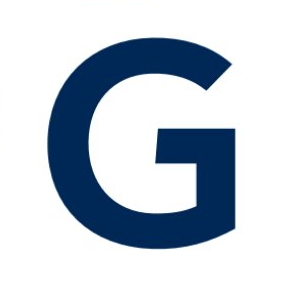Gartner, Inc. - Experts & Thought Leaders
Latest Gartner, Inc. news & announcements
Abnormal Security, the pioneer in AI-native human behaviour security, announced it has been recognised as a pioneer in the first-ever Gartner® Magic Quadrant™ for Email Security Platforms. A complimentary version of the full report can be found. Gartner evaluated 14 vendors across the email security market and placed Abnormal in the Leaders Quadrant. They feel this placement recognises Abnormal for excelling in both Completeness of Vision by addressing current and future email threats, and in Ability to Execute by delivering tangible results for customers. Of all 14 vendors in the Magic Quadrant, Abnormal is positioned furthest for Completeness of Vision. Behavioural AI approach In the report, Gartner highlights that “humans are increasingly incapable of identifying social engineering attacks as large language models (LLMs) are refined for purpose by attackers.” To combat these sophisticated threats, they believe that organisations need solutions that utilise behavioural AI and natural language processing to analyse user behaviour and detect anomalies. Abnormal’s Human Behaviour AI Platform stands out in the market for its unique behavioural AI approach to stopping the full spectrum of email attacks, including sophisticated social engineering threats like business email compromise, credential phishing, and account takeover. Autonomous AI models The platform links via API to analyse thousands of signals from datasets and precisely baseline known behaviour The platform connects via API to analyse thousands of signals from multiple data sets and precisely baseline known behaviour. Autonomous AI models then enable Abnormal to detect anomalous activity and stop never-before-seen attacks with superhuman speed and accuracy. “It’s an honour to be named a Leader in the inaugural Gartner Magic Quadrant for Email Security Platforms,” said Evan Reiser, chief executive officer at Abnormal Security. Gartner Peer Insights™ Customers’ Choice Reiser added: “As organisations seek autonomous solutions to combat sophisticated email threats, Abnormal is setting the bar—using AI to protect humans better than humans can protect humans—and we believe this recognition is a testament to that. We view our Magic Quadrant position as the latest validation of our momentum as an independent, AI-driven cybersecurity company, further cementing our position among the fastest-growing security companies in history.” Abnormal’s inclusion in this Magic Quadrant follows the company’s recent recognition as a Gartner Peer Insights™ Customers’ Choice for Email Security. As of December 19th 2024, out of 263 reviews, Abnormal has a 99% Would Recommend rating and an average rating of 4.8 on Gartner Peer Insights™. Gartner's research publications Gartner's research serials consist of the views of Gartner’s study corps and should not be construed Gartner does not endorse any vendor, product or service depicted in its research publications, and does not advise technology users to select only those vendors with the highest ratings or other designation. Gartner's research publications consist of the opinions of Gartner’s research organisation and should not be construed as statements of fact. Gartner disclaims all warranties, expressed or implied, with respect to this research, including any warranties of merchantability or fitness for a particular purpose. GARTNER is a registered trademark and service mark of Gartner and Magic Quadrant and Peer Insights are a registered trademark, of Gartner, Inc. and/or its affiliates in the U.S. and internationally and are used herein with permission. All rights reserved. Views of Gartner Peer Insights Gartner Peer Insights content consists of the opinions of individual end-users based on their own experiences with the vendors listed on the platform, should not be construed as statements of fact, nor do they represent the views of Gartner or its affiliates. Gartner does not endorse any vendor, product or service depicted in this content nor makes any warranties, expressed or implied, with respect to this content, about its accuracy or completeness, including any warranties of merchantability or fitness for a particular purpose.
Proofpoint, Inc., a cybersecurity and compliance company announced the general availability of its Digital Communications Governance (DCG) offering, bolstering its existing offerings in pace with the evolving modern data governance and enterprise archiving market. DCG offering The new offering helps organisations simplify the governance of communication data and provides security insights across all major digital channels for conducting risk. It leverages artificial intelligence (AI) to surface key data insights, reducing false positives while facilitating high-efficacy information discovery and supervisory review. Visibility challenges The current data governance and compliance market has evolved from an archive and repository-centric approach to one that is centered on managing an ever-growing number of digital communication channels and collaboration tools. This has created a complex challenge for organisations to gain visibility and context across more disparate data sources and threats than ever before, all while supervising employee behaviours, enforcing corporate policies, and meeting a growing number of regulatory mandates (e.g., FINRA, FCA, HIPAA, GDPR). Unified security and compliance risk management Proofpoint’s DCG offering leverages the company’s AI engine to create contextualised insights Proofpoint’s Digital Communications Governance offering provides unified security and compliance risk management that helps organisations centralise all communications content, enforce proactive, adaptive data controls, and streamline e-discovery and supervision. Proofpoint’s DCG offering leverages the company’s AI engine to create contextualised insights covering every channel and facet of communications data, maximising the efficacy of review by 84% or more when compared to alternatives. Visibility and AI-driven insights "With the rapid proliferation of digital communication channels and increasingly disparate data sources, organisations must consider how to effectively solve security and compliance challenges in a fast and high-efficacy way,” said Harry Labana, senior vice president and general manager of archiving, digital communications governance at Proofpoint. "With significant consequences for non-compliance, Proofpoint’s Digital Communications Governance offering gives organisations the instant visibility and AI-driven insights they need to simplify the delivery of a modern, secure, and compliant environment where employees work and collaborate.” Key capabilities and customer benefits 1) Comprehensive data governance over major communications channels across meetings, mobile, collaboration, emails, social media, voice, videos, and files: Full fidelity, context-aware data capture across 80+ channels including mobile channels such as SMS, WhatsApp, and WeChat, as well as social and collaboration channels including Microsoft Teams, Zoom, WebEx, Slack, RingCentral, and YouTube. Intuitive, native app-like communications and data review experience. Real-time policy enforcement across social media to prevent reputational damage and compliance violations before they occur. Advanced search that contextualises search types such as wildcards and emojis. 2) Fast response to real-time compliance risk with AI-assisted pre-review and post-review of communications data and content: Increase alert relevancy and detect over 200 different risks ‘out-of-the-box' using industry-curated scenarios for any communication channel. Perform AI-assisted review with easily configured models. Quickly create and deploy policy-based custom models that address industry- and corporate-specific risks. Protect event ‘Protect’ event series builds on Proofpoint’s industry recognition in compliance and archiving The solution will be showcased at Proofpoint’s upcoming ‘Protect’ event series, which begins on September 10, 2024, in New York City. It builds on Proofpoint’s industry recognition in compliance and archiving, with Gartner® naming Proofpoint a Representative Vendor in the 2023 Gartner Market Guide for Digital Communications Governance. Supporting quotes “By 2027, 40% of enterprise customers will proactively assess workstream collaboration and meeting solution content for corporate policy and general business insights, up from less than 5% in 2023.” - 2023 Gartner Market Guide for Digital Communications Governance. “By 2027, 65% of enterprise customers will combine supervision of text- and audio/video-based content to monitor communication governance, up from less than 15% in 2023.” - 2023 Gartner Market Guide for Digital Communications Governance.
Logpoint has been named a Niche Player in the 2024 Magic Quadrant for Security Information and Event Management (SIEM) by Gartner, the independent industry analyst firm. Logpoint has been recognised in every Magic Quadrant for SIEM since 2018. Logpoint offers a Converged SIEM solution that comes with native Security Orchestration, Automation & Response (SOAR). The solution offers Threat Detection, Investigation & Response (TDIR) and compliance use cases, helping organisations increase cybersecurity and reduce cyber risk either directly or through MSSPs. Minimising associated risks “We’re incredibly honoured to be recognised in the Gartner Magic Quadrant once again. We believe this latest recognition is a testament to our continued efforts to provide industry-leading SIEM with automation capabilities and great user-experience to the mid-market at predictable pricing,” says Sean Muirhead, Logpoint CPO. “We’re also really proud to be recognised in this Gartner report as a European company, which is on the trajectory to become a European Cybersecurity Powerhouse.” Logpoint is a European cybersecurity and compliance technology vendor, focused on democratising threat detection and incident response capabilities to the mid-market. It offers a node-based pricing model to ensure transparent and predictable costs for organisations and MSSPs looking to combat cyber threats and minimise associated risks.
Insights & Opinions from thought leaders at Gartner, Inc.
Who needs cards when everyone has a smartphone? That’s the key question underlying the access control industry’s transition to mobile credentials. But the transition is easier said than done, and mobile credentialing, for all its advantages, also has limitations, which further innovation continues to address. Wider acceptance comes next, driven by use cases in various vertical markets. We asked this week’s Expert Panel Roundtable: What are the latest developments in mobile access control?
In my coverage of China Tariffs impacting the security industry over four recent articles, products on the tariff schedules routinely integrated into security solutions included burglar and fire alarm control and transmission panels, video surveillance lenses, HDTV cameras used for broadcast use cases and fiber optic media converters. The general ‘callout’ of ADP (Automatic Data Processing) devices and peripherals technically includes servers, workstations and microcomputers, all of which are commonly used to support security solutions. The underperformance, from June 15 to August 24, of U.S. stocks with high revenue-exposure to China, and that of Chinese stocks with high revenue-exposure to the United States was significant and almost identical at 3.2%, significant losses to some investors already involved in security industry M&A activity. Significant public safety Facial Recognition (FR) vendors leveraging AI expanded their market focus to retail and public safety While it was not apparent that practitioners’ security program budgets kept pace with the growth of the more popular solution providers like video surveillance and cyber security, the ICT industries supporting the security economy continued to expand, especially in wireless and wired infrastructure, including preparations for 5G wireless rollouts. These omnipresent technologies drove significant public safety, smart city and public venue projects in 2018. Facial Recognition (FR) vendors leveraging AI expanded their market focus to retail and public safety. In 2018, virtually every public presentation, webinar and published Q&A on social media monitoring and facial recognition technologies I worked on, involved significant pushback from privacy advocates, almost to the point of alarmism. Massive risk reduction Several solution providers in these areas have made significant strides on data protection, accuracy, powered by AI and documented crime reduction cases; however, this real news is quickly shadowed by privacy advocates, seemingly ignoring massive risk reduction, especially in the case of active assailants and gang-related crime. Will FR become mainstream? The cautious security industry may take a cue from the maverick retail industry, sports venue and VIP verification solution providers that grew in 2018. 2019 trends: presupposition or repudiation; winners and losers. Chinese tariffs have had a huge impact on the security industry, which can be seen from changes to U.S and Chinese stocks Although technology adoption forecasting is inexact, there are definitive opportunities in the security industry born on necessity. With the widespread problem of false alarm transmission and inability for first responders to ‘be everywhere,’ developers of solutions that provide automated verification and alternative security incident detection are expected to become mainstream. Promising detection systems The use of AI, NLP, LiDAR, UAS (Unmanned Aerial Vehicles aka drones) with surveillance and thermal imaging will grow, mostly due to higher acceptance in other industries like autonomous vehicles, rail safety, terrain and post devastation mapping/rescue. However, legacy ‘listing’ or certification organisations will be forced to make an important decision for their own survival: work toward integrating these promising detection systems into acceptance by insurance, licensing and standards development organisations. 2019’s ‘true’ Industrial Philanthropists will be needed to fund early warning tech for firefighters and the presence of active assailants 2019’s ‘true’ industrial philanthropists will be needed to fund early warning tech for firefighters and the presence of active assailants. For these use cases, 5G infrastructure rollouts, FR acceptance, lower cost perimeter detection and long range object and fire recognition by LiDAR and Thermal imaging will all be watched closely by investors. Should public agencies and philanthropical solution providers in the security industry cross paths, we may just yet see a successful, lifesaving impact. Cyber risk profile The ‘Digital twin’ refers to a digital replica of physical assets (physical twin), processes, people, places, systems and devices that can be used for various purposes. Your ‘Security Digital Twin’ has a similar physical and cyber risk profile, either through common threats, similar assets or both. Good news: managing your risk, protecting assets and securing your facilities in 2019 will get easier as security digital twin profiles will grow in maturity, while keeping their data sources private. This will be accelerated by the maturity of AI-based, auto-generated visualisations and image recognition, that happens to also drive the FR solutions. The 5G wireless infrastructure market is emerging as far more of a quantum leap in connectivity, like ‘wireless fiber optics’ performance, than an upgrade to 4G LTE. The 5G infrastructure market will be worth $2.86 billion by 2020 and $33.72 billion by 2026, growing at a compound annual growth rate (CAGR) of 50.9%. Intelligent applications The explosion of ingested voice, video, and meta-data, the interconnectivity of devices, people and places, and the integration of intelligent applications into expanding ecosystems all require faster communications. To be more accurate, 5G rollouts will accelerate in 2019; however, current project funding will include and be impacted by future enterprise security connectivity: 5G and FWA (Fixed Wireless Access). 5G rollouts will accelerate in 2019; however, current project funding will include and be impacted by future enterprise security connectivity Quite simply put, larger solution providers are gently coaxing practitioners into seemingly ‘open systems;’ the negative discovery during an M&A process, audit or integration with a smart city’s public/private partnerships will continue to be revealed, and related industries will force reform. Autonomous things will be enabled by AI and image recognition. With few affordable rollouts of security robots and outdoor unmanned ground vehicles (UGV) that leveraged platforms popular with research and even NASA, the autonomous security robot was mostly MIA from a security practitioner’s program in 2018. Perimeter intrusion detection One platform was even accused of intimidating homeless people in a public place, at a major city. Industries mutually beneficial are often unaware of each other; this will change gradually: one major domestic airport is currently evaluating a UGV platform performing perimeter intrusion detection, runway weather conditions and potential aircraft taxiing dangers. The platform is being used largely in transportation research, yet offers significant opportunities to the security industry. Research firm Gartner estimates that 70% of today’s technology products and services can be enhanced with ‘multi-experience’-based VR/AR/MR The ‘immersive experience’ of virtually any security or threat detection is a twist on virtual/augmented/mixed reality (VR/AR/MR) with additional sensory features. Although VR/AR/MR is well underway in other industries, there are several companies with solutions like VR-based active assailant training that could provide a fighting chance for practitioners, employees, visitors, faculty and children. Research firm Gartner estimates that 70% of today’s technology products and services can be enhanced with ‘multi-experience’-based VR/AR/MR. Security ecosystem members Not necessarily MIA, but of special mention is the need of security and safety practitioners to prioritise communications systems over ‘nice to have’ expansive video surveillance systems for mass casualty threats. This will eventually improve with 5G for Enterprise solution rollouts. At the past GSX and upcoming CES Technology trade shows, a new roundup of technologies is discovered: a wider diversity of protection promise to save ASIS members on their technical security program is realised. With each of the ‘winners,’ (5G, AI, NLP, LiDAR, UAS [Unmanned Aerial Vehicles aka drones], thermal imaging, digital security twins and smart-city-friendly technologies) it is both exciting and challenging work for both security practitioners and solution providers. All things equal and with the necessary technology acceptance testing processes, this is a truly great time for security ecosystem members.
Video surveillance as a service (VSaaS) is not just for commercial organisations. Federal, state and local governments can also realise benefits from the technology—and use it to deliver an integrated video surveillance system that addresses some of their unique security needs. Video Surveillance as a Service (VSaaS) What is VSaaS? Simply stated, it’s a cloud-based video surveillance solution that is packaged and delivered as a service over the internet. The price varies depending on the features of your plan (i.e. number of cameras, amount of storage, software features, etc.), and you pay a monthly subscription price to use it. How does it work? Internet Protocol (IP) cameras are installed at site locations, and the video is captured and streamed to a service provider’s data center via an internet connection. The video management software (VMS) runs on backend infrastructure provided by the service provider’s cloud. All video processing is done in the cloud, and all that is required to view the footage is an internet-connected device and a web browser. Retail, health care, education, and transportation all benefit from the flexibility and architecture of VSaas Growing VSaaS providers Solution providers such as Axis Communications, Genetec, and G4S among many others offer VSaaS solutions, and the market is growing. According to IHS Markit, the market is expected to reach $2.3 billion in 2021. VSaaS is a solution with cross-industry appeal. Retail, health care, education, and transportation all benefit from the flexibility and architecture of the solution. But how does VSaaS address the surveillance needs of government institutions? Geographic coverage and access To protect cities and towns, law enforcement must watch over widespread geographic areas. Their work involves monitoring and policing many different neighborhoods, buildings, garages, parks, and walking paths—basically anywhere there is property or people to protect. They rely on video surveillance to help them keep these environments safe. But it’s more than local law enforcement officers who use video footage. From local city officials to federal and state law enforcement agencies, many other people, at times, need access to video footage captured by city surveillance cameras. Centralised remote monitoring How does VSaaS help? VSaaS enables the installation of cameras throughout cities and communities and stream footage to a central location via the Internet. Because the system is centralised, it eliminates the need to manage a lot of different standalone DVRs or NVRs, which enables organisations to monitor a large area from a remote command center. VSaaS enables the installation of cameras throughout cities and communities and stream footage to a central location via the Internet Plus, anyone with proper credentials can access the footage from an Internet-connected device—whether that be a smartphone, laptop, desktop, or tablet. That makes it easier for multiple agencies to work together, which in turn can improve communication and response time to incidents. Budget concerns and flexibility Tight budgets are normal in government. As a result, it’s often a challenge to procure capital for new technology purchases—and that sometimes leads to underfunded projects and difficulty upgrading old technology. VSaaS changes the expense model. It allows you to shift from a capital expenditure (CapEx) model, where large capital funding is required to purchase equipment, to an operational expenditure (OpEx) model, where the costs of the solution become an operating expense. Since the cameras, installation, storage, and software are packaged into a service, you don’t need a large capital outlay up front—you simply pay a predictable expense every month. VSaaS provides the capability for you to increase storage capacity when you need it Feature and storage capacity upgrade features VSaaS also makes it easier to upgrade old technology. When new technology becomes available, you can upgrade to it as part of the service. You no longer have to stick with old technology because of capital budget restrictions. Instead, you can upgrade to better cameras and management software features as they become available. The same is true for storage capacity. As camera resolution increases, the amount of data captured also increases. In addition, with the evolution of smart city technology and big data analytics, video data has become more valuable. As a result, there is a need not only to store more data but also to keep that data accessible for a longer period of time. VSaaS provides the capability for you to increase storage capacity when you need it. You can scale to accommodate growth, and since the storage is delivered as part of the service, you can leverage the “pay for use” model to manage your costs. On-premise storage or hybrid Where should surveillance video be stored? It’s an important question. After all, government entities must always comply with data privacy laws and handle data properly to ensure it can be used as evidence if needed. As a result, officials may prefer to be selective about where they store video data. In fact, the concern over regulatory requirements and security and privacy issues, according to Gartner, will lead governments to implement private cloud at twice the rate of public cloud through 2021. The provider’s ability to store large amounts of data cost-effectively makes VSaaS possible That’s not necessarily a show-stopper when it comes to video surveillance. Some VSaaS providers offer hybrid options. Plus, one of the things that makes VSaaS possible is the provider’s ability to store large amounts of data cost-effectively. Because service providers can manage their storage infrastructures economically, they can offer their service at an attractive price. Multi-tier storage infrastructure In a way, government institutions (as well as commercial organisations) can do the same thing. If a government entity—for example, a small municipality—wanted to store their data on-premise or implement a hybrid configuration, they could solve some of their video storage challenges by implementing a multi-tier storage infrastructure similar to what a VSaaS provider might use to provide the actual service. A multi-tier storage infrastructure uses different storage media—disk, object storage, tape, and cloud—and combines them to deliver the total capacity needed while balancing performance and cost. The diagram below is an illustration of a multi-tier infrastructure: As the diagram shows, storage capacity grows using lower cost forms of media as volume and long-term retention requirements change. Files are moved between tiers based on user-defined policies. When the policies are met, the files are moved to a lower cost tier. Some file systems allow for multiple copies be written at ingest which not only minimises the traffic of moving files across the network, but also provides much needed data protection through a second copy on a lower-cost tier. This scenario enables you to optimise the amount of high-performance media in your infrastructure and lower the long-term cost of retaining files. VSaaS offers many benefits for government institutions and commercial organisations alike Choice of implementations VSaaS offers many benefits for government institutions and commercial organisations alike. But not every implementation has the same needs or requirements. The good news is, when it comes to video surveillance solutions, you have options. You can leverage the benefits of VSaaS, in either a public cloud or hybrid scenario, depending on the service provider. Or if your needs dictate, you can achieve some of the same capacity and cost-saving benefits you would get from a VSaaS solution by implementing an on-premise solution based on a centralised VMS system and multi-tier storage. The choice is yours.
Palm vein recognition
DownloadThe key to unlocking K12 school safety grants
DownloadPhysical access control
Download5 surprising findings from OT vulnerability assessments
DownloadHoneywell GARD USB threat report 2024
Download






























